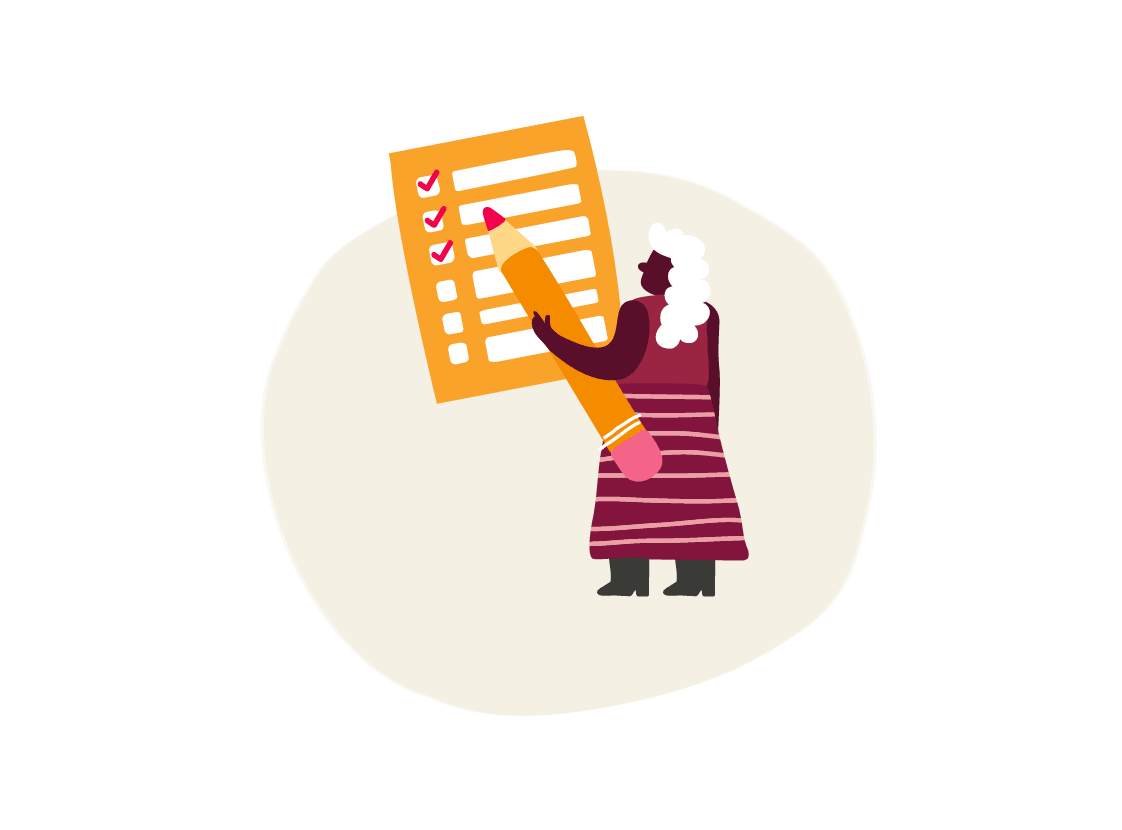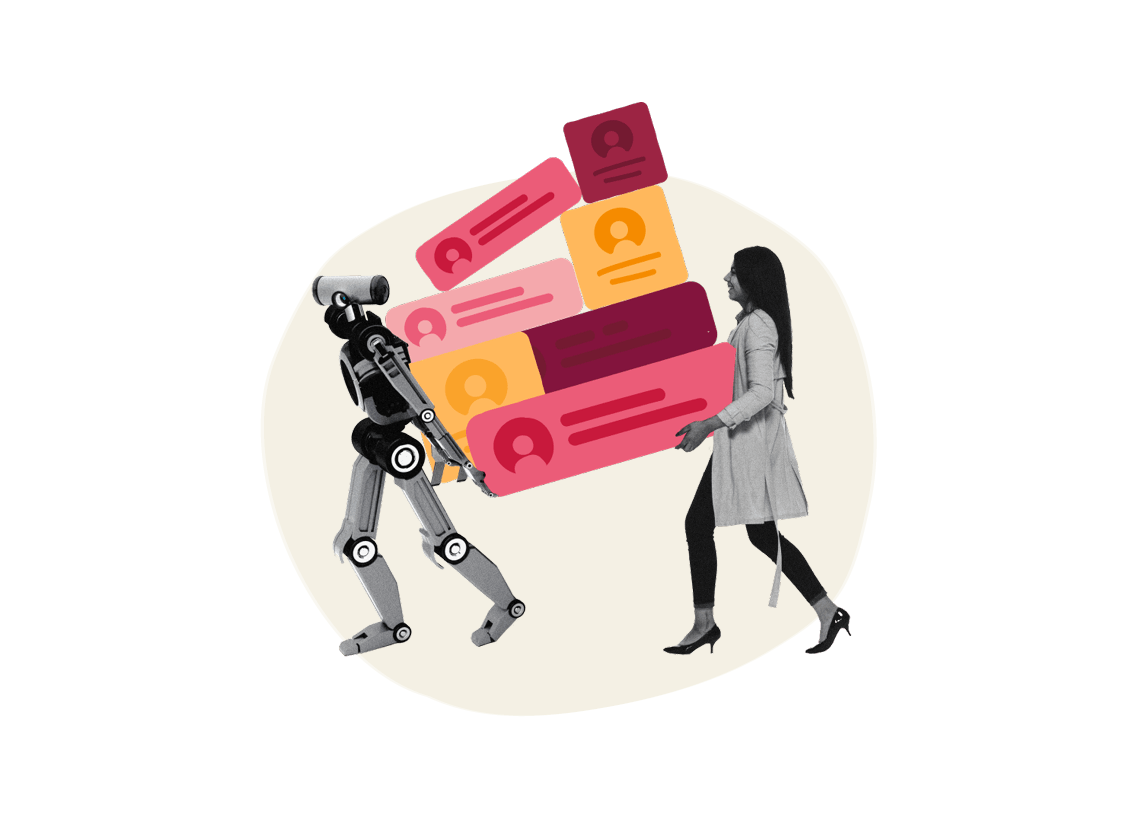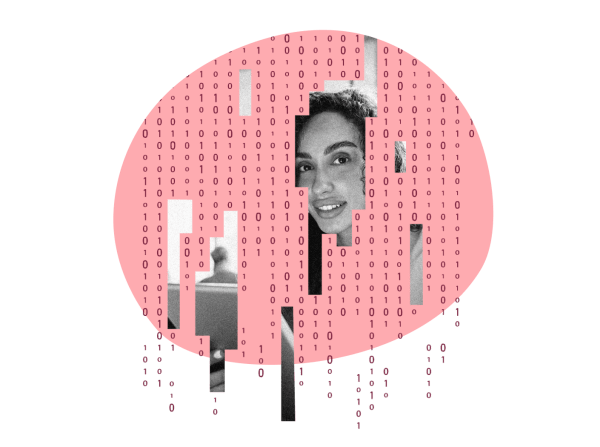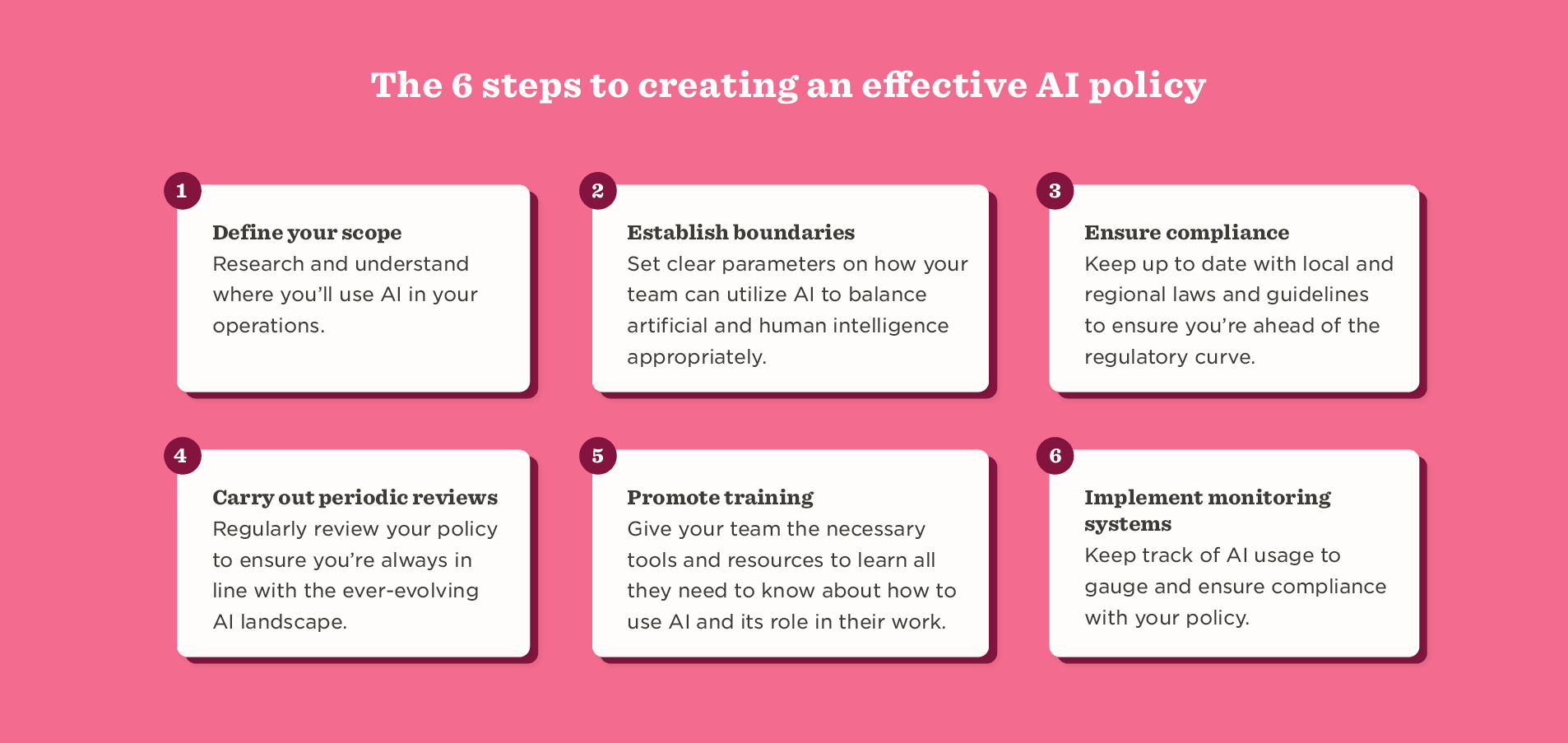Introduction
Here’s a pop quiz for you. Can you name one technological advancement as intriguing yet controversial as generative AI?
No, we can’t either.
When ChatGPT-3.5 launched in November 2022, the AI revolution truly began. What followed was a vibrant mix of widespread concern about bots taking over our jobs and excitement about the efficiencies, potential cost savings, and general handiness of an endless and accessible source of artificial intelligence.
But, many organizations see AI as a double-edged sword.
On the one side, you have the allure of efficiencies and cost savings. On the other, you have the threat of job displacement, the cost of reskilling, as well as fears of plagiarism and bland, unoriginal content.
An IBM study that polled executives revealed that respondents “estimate that 40% of their workforce will need to reskill as a result of implementing AI and automation over the next three years.”
But in the same breath, the study highlighted a strong belief that AI will become a tool that complements, rather than replaces, people—it stated that “87% of executives surveyed believe employees are more likely to be augmented than replaced by generative AI.”
The responsibility now rests on the shoulders of HR leaders to navigate the choppy waters of this intricate new technological landscape.

Keeping pace with AI compliance legislation
With no precedent set for how to deal with AI, HR departments find themselves in the unique position of being able to craft comprehensive guidelines on the practicalities of AI usage from a relatively blank page.
But as the burgeoning realm of artificial intelligence legislation continues to grow, continued compliance will be another matter entirely. New laws, discussions, and frameworks are in the works to ensure AI advances remain ethical, controlled, and ultimately beneficial.
For multi-national teams, legislation can be even more complex. For example, the United States will have one set of stringent rules, while the United Kingdom, Australia, or Israel will each have entirely different sets.
This complicates the process of creating an ever-evolving company policy but also highlights the increasing need for such a policy to be in place.
For HR, staying updated on these legislative changes isn’t optional—it’s essential. Ensuring compliance across multiple jurisdictions is a process that requires continuous learning and adaptation.
<<To create your own effective AI policy, download our AI policy checklist>>

New tech, new challenges
The integration of AI into the corporate sphere is not without its challenges. For HR professionals, these challenges can cover several different areas:
- Recruitment. Recruitment has always been about finding the crème de la crème of talent and funneling them further down your hiring process. But what do we do when potential recruits have the power of AI at their fingertips? What about when CVs and cover letters are AI-generated or home tests are completed with the help of bots? Is this cheating? Or is this a case of ingenuity and strategically using the tools at your disposal?
- On-the-job usage. For some, AI tools are productivity boosters. They help streamline tasks and promote efficiency. Others use AI out of necessity, and there can be questions of laziness or dependency. This makes establishing a clear rule about AI usage a priority.
- Income supplementing. Since AI usage has become mainstream, there have been reports of people holding down multiple “full-time” jobs because generative AI tools like ChatGPT have made them incredibly productive. While some may argue that this already falls under the category of a conflict-of-interest policy, others may see this as a novel issue that needs addressing.
In the face of challenges such as these, ambiguity can’t be allowed to creep into your processes. Each of these challenges warrants a clear company policy that outlines the dos and don’ts of AI usage in the workplace.
This way, everyone can be on the same page, and even well-intentioned misuse of AI can be controlled and regulated.

Crafting your own workplace AI policy
Where do you start?
As the power and influence of AI continue to march forward, organizations find themselves at a crossroads with many questions to ponder.
There are the more practical questions: Should AI be adopted or ignored? To what extent should AI be used? How can generative AI be weaved into daily operations across various departments?
And then there’s the moral and ethical side of things, such as whether AI can help to promote a more equitable workplace.
Before you start creating an AI policy, it’s important to know and understand the risks:
- False information. While AI is a powerful source of knowledge, it’s still prone to churning out inaccurate, misleading, or downright incorrect information. It’s also important to remember that AI giants such as ChatGPT are only informed up to 2021, meaning the knowledge isn’t necessarily up to date.
- Plagiarism. AI can generate content, but it cannot generate unique content. Instead, it uses preexisting source material—leading to the possibility of unintentional plagiarism.
- Copyright infringement. In a similar vein to the plagiarism issue, there’s concern around AI inadvertently using copyrighted material.
- Data protection. With AI tools accessing large data sets and no strict rules around data protection, there are worries about the confidentiality of intellectual property and sensitive data.
- Local/regional AI compliance. Depending on where you are in the world, there are different and ever-evolving rules regarding AI. This makes it complicated to ensure your operations remain above board and compliant with local and regional regulations.
- Monitoring and incident response. The use of AI is difficult to monitor, making it complicated to set up and keep track of violations and data breaches.
The 6 steps to creating an effective AI policy
When creating your own AI policy, it’s important to take a structured approach and set a clear direction. Here are the six steps to help steer you through the process:
- Define your scope. Research and understand where you’ll use AI in your operations.
- Establish boundaries. Set clear parameters on how your team can utilize AI to balance artificial and human intelligence appropriately.
- Ensure compliance. Keep up to date with local and regional laws and guidelines to ensure you’re ahead of the regulatory curve.
- Promote training. Give your team the necessary tools and resources to learn all they need to know about how to use AI and its role in their work.
- Implement monitoring systems. Keep track of AI usage to gauge and ensure compliance with your policy.
- Carry out periodic reviews. Regularly review your policy to ensure you’re always in line with the ever-evolving AI landscape.
A detailed checklist for your company AI policy
We’ve created this AI policy template checklist to serve as a condensed guide to help you create your own policy or to make sure yours is up to scratch.
This checklist provides a quick overview of everything you’ll need to consider to ensure you maintain the highest standards of integrity, safety, and transparency.
<<To create your own effective AI policy, download our AI policy checklist>>
Recommended For Further Reading
The delicate balance of artificial and human intelligence
There is a fine line between the convenience and danger of AI.
For HR leaders, the mission is clear: Harness the power and potential of AI while crafting guidelines that protect the interests of both your organization and your people.
Because robust AI policies aren’t just about responding to technological evolution—they’re also a statement that signals your readiness to embrace the future with clarity, conviction, and compassion.

Meet Bob
At HiBob, we’ve built a modern HR platform designed for modern business needs—today and beyond.
We focused on building something that is robust yet intuitive and easy-to-use, which has led Bob to be the platform of choice for thousands of fast-growing modern, mid-sized organizations.
For HR, it delivers automation of many common processes, allows greater oversight and visibility of the business, and centralizes all people data in a secure, user-friendly environment.
For managers, it provides access to data and insights to help them lead more effectively and streamline processes.
For employees, it’s the tools and information they need to connect, develop, and grow throughout their journey.
In a short time, Bob can be deployed to enable communication, collaboration, and connectivity that drives stronger engagement, productivity, and business outcomes.


